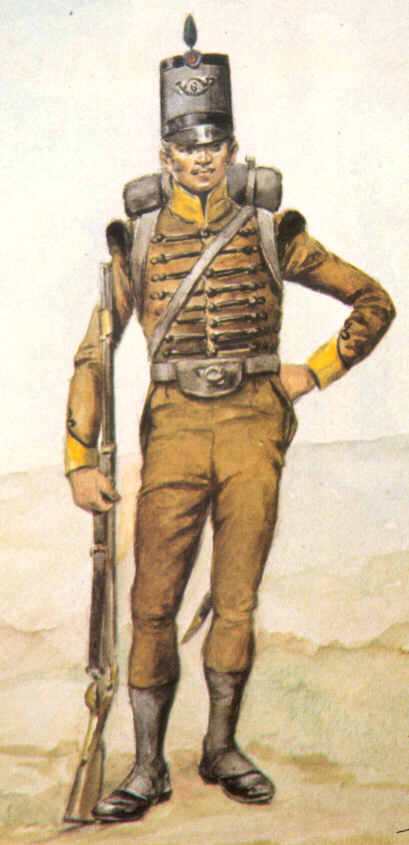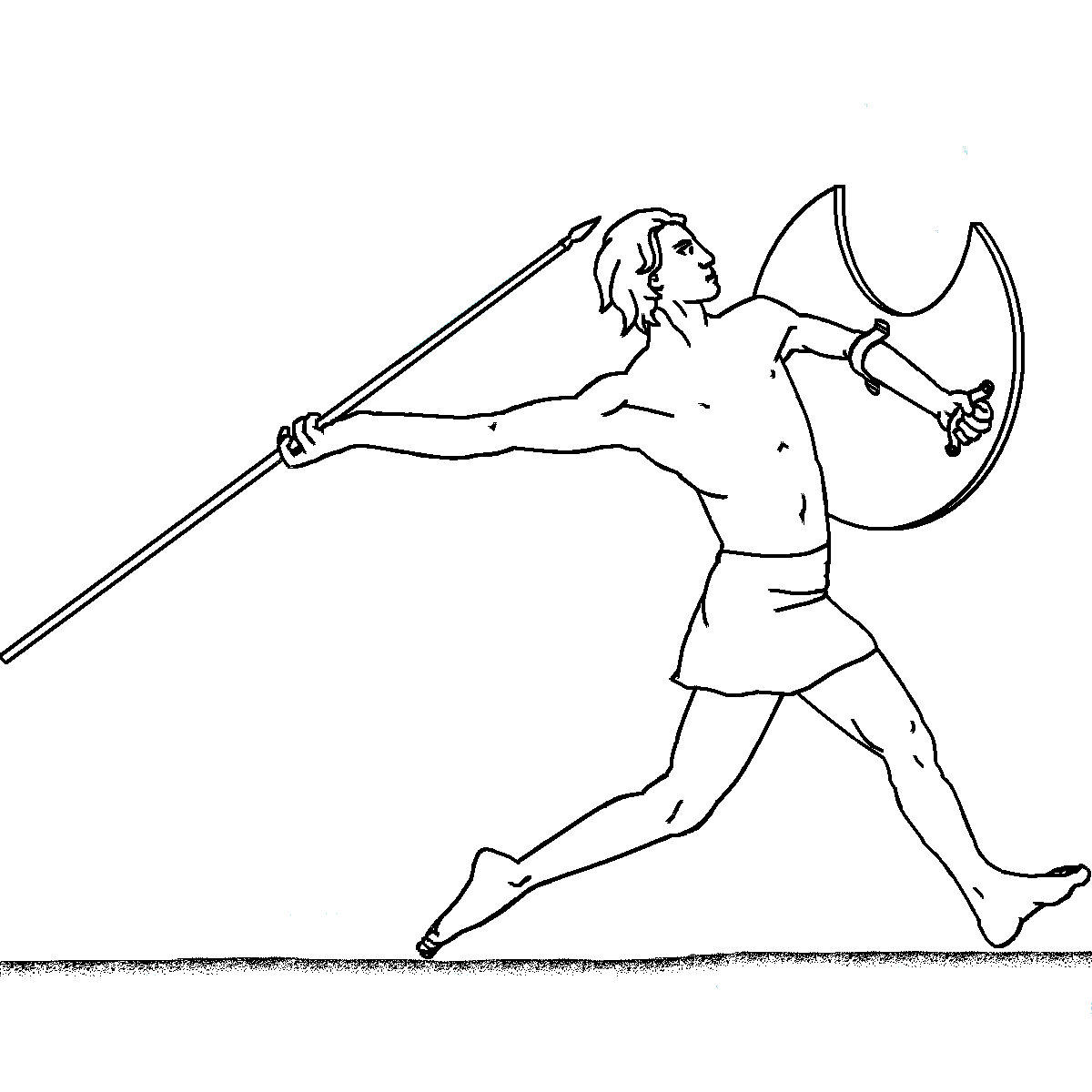|
Peltast
A ''peltast'' (, ) was a type of light infantry originating in Thracians, Thrace and Paeonia (kingdom), Paeonia and named after the kind of shield he carried.Williams, Mary Frances. "Philopoemen's special forces: Peltasts and a new kind of greek light-armed warfare (Livy 35.27) " ''Historia: Zeitschrift Für Alte Geschichte'' H. 3 (2004): 257-277. Thucydides mentions the Thracian peltasts, while Xenophon in the Anabasis (Xenophon), Anabasis distinguishes the Thracian and Greek peltast troops. The peltast often served as a skirmisher in Hellenistic period, Hellenistic armies. In the Middle Ages, the same term was used for a type of Byzantine Empire, Byzantine infantryman. Description ''Pelte'' shield ...[...More Info...] [...Related Items...] OR: [Wikipedia] [Google] [Baidu] |
Thracians
The Thracians (; ; ) were an Indo-European languages, Indo-European speaking people who inhabited large parts of Southeast Europe in ancient history.. "The Thracians were an Indo-European people who occupied the area that today is shared between Thrace, north-eastern Greece, Romania, and north-western Turkey. They shared the same language and culture. There may have been as many as a million Thracians, divided among up to 40 tribes." Thracians resided mainly in Southeast Europe in Present (time), modern-day Bulgaria, Romania, North Macedonia, northern Greece and European Turkey, but also in north-western Anatolia, Anatolia (Asia Minor) in Turkey. The exact origin of the Thracians is uncertain, but it is believed that Thracians like other Indo-European speaking groups in Europe descended from a mixture of Proto-Indo-Europeans and Early European Farmers. Around the 5th millennium BC, the inhabitants of the eastern region of the Balkans became organized in different groups of Indi ... [...More Info...] [...Related Items...] OR: [Wikipedia] [Google] [Baidu] |
Hoplites
Hoplites ( ) ( ) were citizen-soldiers of Ancient Greek city-states who were primarily armed with spears and shields. Hoplite soldiers used the phalanx formation to be effective in war with fewer soldiers. The formation discouraged the soldiers from acting alone, for this would compromise the formation and minimize its strengths. The hoplites were primarily represented by free citizens – propertied farmers and artisans – who were able to afford a linen or bronze armour suit and weapons (estimated at a third to a half of its able-bodied adult male population). Some states maintained a small elite professional unit, known as the '' epilektoi'' or logades ('the chosen') because they were picked from the regular citizen infantry. These existed at times in Athens, Sparta, Argos, Thebes, and Syracuse, among other places. Hoplite soldiers made up the bulk of ancient Greek armies. In the 8th or 7th century BC, Greek armies adopted the phalanx formation. The formation ... [...More Info...] [...Related Items...] OR: [Wikipedia] [Google] [Baidu] |
Skirmisher
Skirmishers are light infantry or light cavalry soldiers deployed as a vanguard, flank guard or rearguard to screen a tactical position or a larger body of friendly troops from enemy advances. They may be deployed in a skirmish line, an irregular open formation that is much more spread out in depth and in breadth than a traditional line formation. Their purpose is to harass the enemy by engaging them in only light or sporadic combat to delay their movement, disrupt their attack, or weaken their morale. Such tactics are collectively called skirmishing. An engagement with only light, relatively indecisive combat is sometimes called a skirmish even if heavier troops are sometimes involved. Skirmishers can be either regular army units that are temporarily detached to perform skirmishing or specialty units that were specifically armed and trained for such low-level irregular warfare tactics. Light infantry, light cavalry (historically), and irregular units often specialize in ... [...More Info...] [...Related Items...] OR: [Wikipedia] [Google] [Baidu] |
Light Infantry
Light infantry refers to certain types of lightly equipped infantry throughout history. They have a more mobile or fluid function than other types of infantry, such as heavy infantry or line infantry. Historically, light infantry often fought as Reconnaissance, scouts, Raid (military), raiders, and skirmishers. These are loose formations that fight ahead of the main army to harass, delay, disrupt supply lines, engage the enemy's own skirmishing forces, and generally "soften up" an enemy before the main battle. Light infantrymen were also often responsible for Screening (tactical), screening the main body of a military formation. Following World War II, the term "light infantry" has evolved to include rapid-deployment units (including commando and Airborne forces, airborne units) that emphasize speed and mobility over armor and firepower. Some units or battalions that historically held a skirmishing role retain their designation "light infantry" for the sake of tradition. His ... [...More Info...] [...Related Items...] OR: [Wikipedia] [Google] [Baidu] |
Phrygian Cap
The Phrygian cap ( ), also known as Thracian cap and liberty cap, is a soft Pointed hat, conical Hat, cap with the apex bent over, associated in Classical antiquity, antiquity with several peoples in Eastern Europe, Anatolia, and Asia. The Phrygian cap was worn by Thracians, Dacians, Persians, Medes, Scythians, Troy, Trojans, and Phrygians after whom it is named. The oldest known depiction of the Phrygian cap is from Persepolis in Iran. Although Phrygian caps did not originally function as liberty caps, they came to signify freedom and the pursuit of liberty first in the American Revolution and then in the French Revolution, particularly as a symbol of Jacobinism (in which context it has been also called a Jacobin cap). The original cap of liberty was the Roman ''Pileus (hat), pileus'', the felt cap of emancipated slaves of ancient Rome, which was an attribute of Libertas, the Roman goddess of liberty. In the 16th century, the Roman iconography of liberty was revived in emblem b ... [...More Info...] [...Related Items...] OR: [Wikipedia] [Google] [Baidu] |
Javelins
A javelin is a light spear designed primarily to be thrown, historically as a ranged weapon. Today, the javelin is predominantly used for sporting purposes such as the javelin throw. The javelin is nearly always thrown by hand, unlike the sling, bow, and crossbow, which launch projectiles with the aid of a hand-held mechanism. However, devices do exist to assist the javelin thrower in achieving greater distances, such as spear-throwers or the amentum. A warrior or soldier armed primarily with one or more javelins is a javelineer. The word javelin comes from Middle English and it derives from Old French ''javelin'', a diminutive of ''javelot'', which meant spear. The word ''javelot'' probably originated from one of the Celtic languages. Prehistory There is archaeological evidence that javelins and throwing sticks were already in use by the last phase of the Lower Paleolithic. Seven spear-like objects were found in a coal mine in the city of Schöningen, Germany. Stratigraphy, ... [...More Info...] [...Related Items...] OR: [Wikipedia] [Google] [Baidu] |
Strapped Shield
A strapped shield or arm shield is a shield which is attached to a user’s lower arm via leather gripping straps on the back of the shield, sometimes together with a guige (or ‘shield sling’), rather than wielded via a centre shield grip. Enarmes The straps of a strapped shield are called ''enarmes'' or simply ''shield straps''. Enarmes were held in place by Rivet, riveting through the leather and the facing of the shield, and reinforced with small, square-cut Washer (hardware), washers. Enarmes are visible on shields in the Bayeux Tapestry. See also * Guige References * Medieval shields {{medieval-armour-stub ... [...More Info...] [...Related Items...] OR: [Wikipedia] [Google] [Baidu] |
Guige
A guige ( /ɡiːʒ/, /ɡiːd͡ʒ/) or shield sling is a long strap, typically made of leather, used to hang a shield on the shoulder or neck, either to help make the shield less vulnerable to moving out of position when struck or grabbed by an opponent during combat, or to take its weight when not in use. Used in combat, it could also free a soldier to use a weapon requiring two hands without discarding the shield; the shield could then be easily retrieved when needed. Some guiges had a buckle to adjust the length. A guige could be attached to the shield anywhere along its rim, and could run horizontally, vertically, or diagonally across the diameter of the shield. Most information about the usage of guiges comes from various Medieval works of art, such as the Bayeux Tapestry The Bayeux Tapestry is an embroidery, embroidered cloth nearly long and tall that depicts the events leading up to the Norman Conquest, Norman Conquest of England in 1066, led by William the Conque ... [...More Info...] [...Related Items...] OR: [Wikipedia] [Google] [Baidu] |
Carduchii
The Carduchii or Karduchoi were a group of warlike tribes that inhabited an area stretching from the Botan River in the south to an area north of Cizre in present-day Turkey. Sometime after 401 BC, they expanded their authority into the northern Tigris valley. Between 165–95 BC, they established the independent kingdom of Gordyene, seemingly as a result of the power vacuum that took place following the weakening of the Greek Seleucid Empire (312 BC – 63 BC). Name and origins The ethnolinguistic origin of the Carduchii is uncertain, though it seems they were of non-Armenian origin based on the accounts of the Greek historian Xenophon (died 354/55 BC) and classical writers such as Strabo (died 24 AD) and Plutarch (died after 119 AD). The Iranologist and Kurdologist Garnik Asatrian considers them to have been an indigenous pre Indo-European people inhabiting the area before Indo-Aryan migrations. The origin of the name "Carduchii" is uncertain. Some historians have sugges ... [...More Info...] [...Related Items...] OR: [Wikipedia] [Google] [Baidu] |
Cubit
The cubit is an ancient unit of length based on the distance from the elbow to the tip of the middle finger. It was primarily associated with the Sumerians, Egyptians, and Israelites. The term ''cubit'' is found in the Bible regarding Noah's Ark, the Ark of the Covenant, the Tabernacle, and Solomon's Temple. The ''common cubit'' was divided into 6 palm (unit), palms × 4 Finger (unit), fingers = 24 digit (unit), digits. ''Royal cubits'' added a palm for 7 palms × 4 fingers = 28 digits. These lengths typically ranged from , with an ancient Roman cubit being as long as . Cubits of various lengths were employed in many parts of the world in ancient history, antiquity, during the Middle Ages and as recently as Early modern Europe, early modern times. The term is still used in hedgelaying, the length of the forearm being frequently used to determine the interval between stakes placed within the hedge. Etymology The English word "cubit" comes from the Latin language, Latin noun ... [...More Info...] [...Related Items...] OR: [Wikipedia] [Google] [Baidu] |








